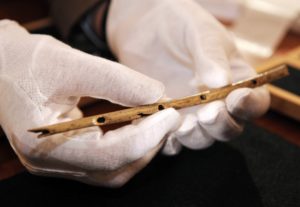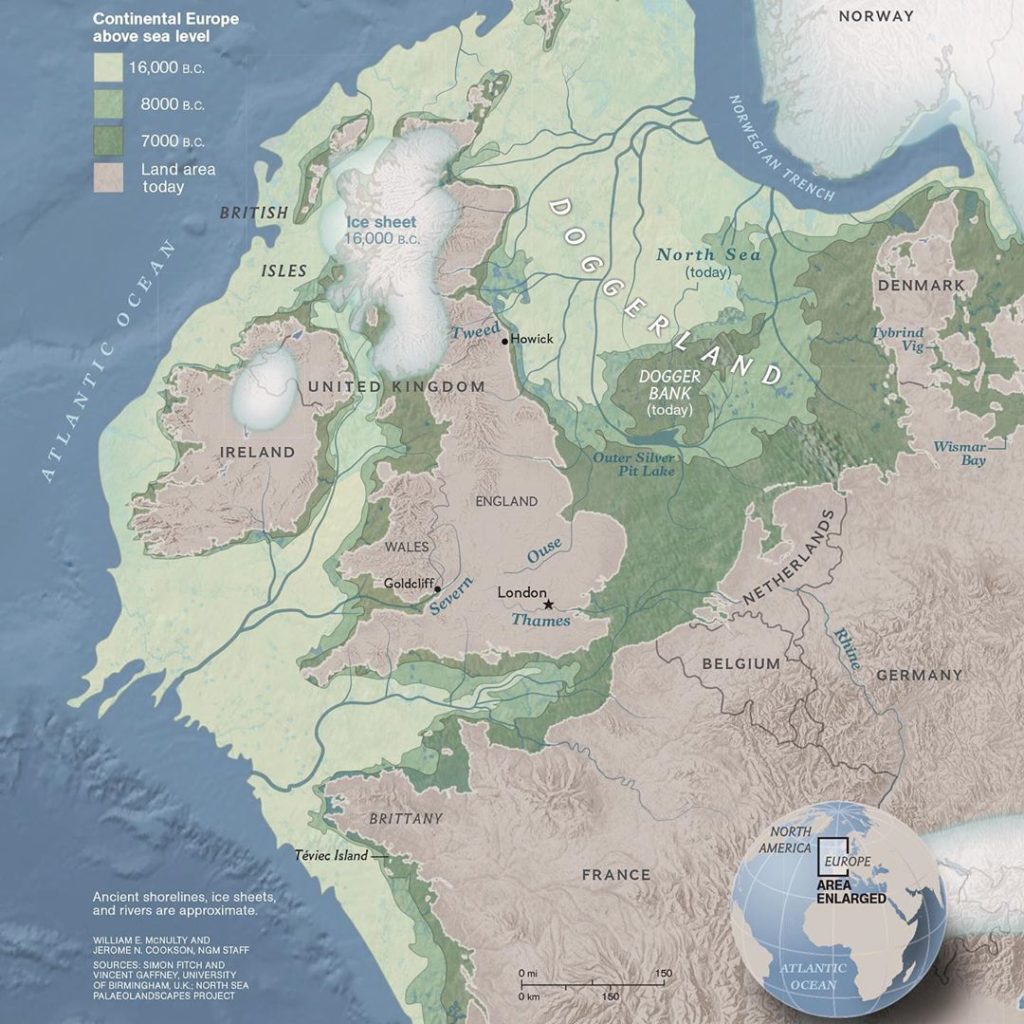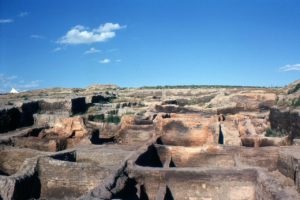Ancestor’s Path
Articles about our ancient family.
drank from adorable sippy cups. Dating as far back as 5,500 BCE, they become increasingly common from the late
Bronze Age into the early Iron Age. These held cow’s milk apparently, which adds an interesting background fact to the picture. Look at the touching details of these designs and the parental love they show. The heartbreaking shadow context is that these are found in the graves of young children. A bit more detail here.
5000 years later many names have recognizable roots and traces.
A darkly poignant human story of lost knowledge and cruelty, connecting prehistory to today.
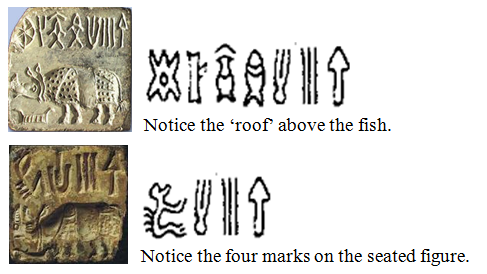
This picture is a comparison between ancient Harappan script and Easter island Rongorongo characters. They are unmistakably related. This is a bit of a mind fuck because they are about as far apart as possible both on the surface of the earth and over the length of human time. 1
The (Indus valley) Harappan culture was astoundingly advanced and sophisticated (I’ll explore how advanced in a later post). It began and flowered ~8 thousand years ago 2 during the eye-blink brevity of the neolithic agricultural transformation of humanity from the old stone age to new. 3 We still cannot understand the script but apparently, it WAS understood by the priestly caste on Easter island, where it was considered sacred.
In the 1800’s Peru took half the Easter island population as slaves including everyone who knew how to interpret the symbols. The survivors took to obsessively copying the characters onto scraps of wood. They wanted to keep the language alive but it was now only an empty, outward form, cut off from meaning. It drifted into mere decoration and when the missionaries arrived, they pressured the survivors to burn all the old writing and make a clean start with Jesus.
1 It also correlates strongly to proto- Chinese!
2 Even if we chop a couple of thousand years off this timeline to correct for exaggeration or error, the continuation of this alphabet/symbol system from Mohenjo-Daro to Rapa-Nui is the longest cultural transmission ever: comparable to modern Egyptians using hieroglyphics.
We lived “Paleolithically” for two hundred thousand years…then took just three thousand years to drop our life strategy as a whole species and throw a new one together. OK, not as a whole species, but the dribs and drabs of hunter-gatherer humanity that carried on are the microscopic exception to the new rule.
An interesting short article at livescience.com about the Neolithic revolution, the brief period when humanity shifted from wandering small tribes to settled agricultural communities. It was a radical shift in lifestyle that undoubtedly challenged the self-control of all participants. One of these early Neolithic communities in southern Turkey lasted for over a thousand years and provides fascinating insights into the experiment in living that took place there. It was densely populated, a proto-city.
The archeological record paints a picture of people pushed beyond coping to into routine violence.
“Archaeologists recently discovered that the transition from foraging to a more communal farming lifestyle raised significant challenges for people who lived at Çatalhöyük, a 32-acre site in southern Turkey that was occupied from 7100 B.C. to 5950 B.C. Çatalhöyük was home to as many as 8,000 people at its peak, and is one of the earliest known cities.
Overcrowding and other factors created a highly stressful environment. And for Çatalhöyük’s Neolithic occupants, stress found an outlet in brutal violence, including bashes to the backs of heads with projectiles, scientists reported in a new study.”
First Neolithic City Was So Overcrowded People Started Trying to Kill Each Other
 John Allen Chau was a 27-year-old American missionary from Vancouver Washington who dreamed of bringing Jesus to the hostile tribe on North Sentinel Island known as the Sentinelese. In a sense, he did, before dying in a volley of arrows. This is a story about many things, including several that are regular subjects of this blog. Buried in this sad stupid story is a raw example of tension force. If you’ve been following that idea, see if you can find the brief area where it comes into focus here.
John Allen Chau was a 27-year-old American missionary from Vancouver Washington who dreamed of bringing Jesus to the hostile tribe on North Sentinel Island known as the Sentinelese. In a sense, he did, before dying in a volley of arrows. This is a story about many things, including several that are regular subjects of this blog. Buried in this sad stupid story is a raw example of tension force. If you’ve been following that idea, see if you can find the brief area where it comes into focus here.
Sentinel Island is 700 miles off India’s mainland. It’s illegal to go there because:
A. They attempt to kill anyone who tries and succeed fairly often.
B. They are an uncontacted hunter-gatherer society, a stone-age tribe of humans who know not a goddamn thing about the messy, stressed out human hives buzzing around them. This makes them a rare treasure despite their murderous diplomacy. What’s in it for us? The mere fact of their untouched existence is like a unicorn in a sacred grove. They exist like the long-hidden heart of wild humanity, steadily beating without us. They aren’t chained up to our machine: They have never tasted the poverty or long hours of the shitty, non-essential work they would be assigned on the periphery of our world. They have an unshared language, names, totems, myths and stories buried deep in the secret world of their lives. They laugh at things, they undoubtedly sing. They track the moon and watch the stars. They surely have a name for us and our crazy machines and our snooping ways. And they have a policy toward us: FUCK OFF!
But there’s a much more important reason not to contact them. Officials say the islanders have lived in isolation for nearly 60,000 years and therefore have no immunities to common illnesses such as the flu and measles. Advocacy group Survival International said that by contacting the community, Chau may have passed along pathogens that have the “potential to wipe out the entire tribe” of about 50 to 150 people. Continue reading
A fascinating glimpse at the first Americans via genetics. They crossed the Bering Strait and shot off in all directions. A body from Nevada turns out to be very closely related to a body found in Brazil, across the equator…a few hundred years later. Close relationships were found between people who lived 10,000 years apart.
Crossing From Asia, the First Americans Rushed Into the Unknown
By CARL ZIMMER November 8, 2018
Three new genetic analyses lend detail, and mystery, to the migration of prehistoric humans throughout the Western Hemisphere.
Some early peoples came 20,000 years ago and died out, their DNA never found again. Some stayed in Alaska or doubled back to it later, apparently soured on the American dream. This article describes the adventure and sweep of this virtual gold-rush of a migration.
Nearly half the world’s population speaks one of the languages derived from a single ancient tongue, dubbed Proto-Indo-European, or PIE. Mainstream scholarship places the Proto-Indo-Europeans in the forest-steppe zone immediately to the north of the western end of the Pontic-Caspian steppe in Eastern Europe. Or more simply a bit north of the Black Sea. Linguists have long argued that PIE first spread from there to Europe some 6,000 to 5,000 years ago. Some archaeologists would extend the time depth of PIE to the middle Neolithic (5500 to 4500 BC) or even the early Neolithic (!) (7500 to 5500 BC). An alternative hypothesis posits that PIE spread some 8,000 years ago from what is now Turkey, after the introduction of agriculture into those regions. In other words, a bit south of the Black Sea. The latest evidence from evolutionary biology and ancient DNA samples, rather than settling the issue, is adding to the controversy.
This flow chart or family tree should be read from the lower left-hand corner up and outward ending at the top left and top right.
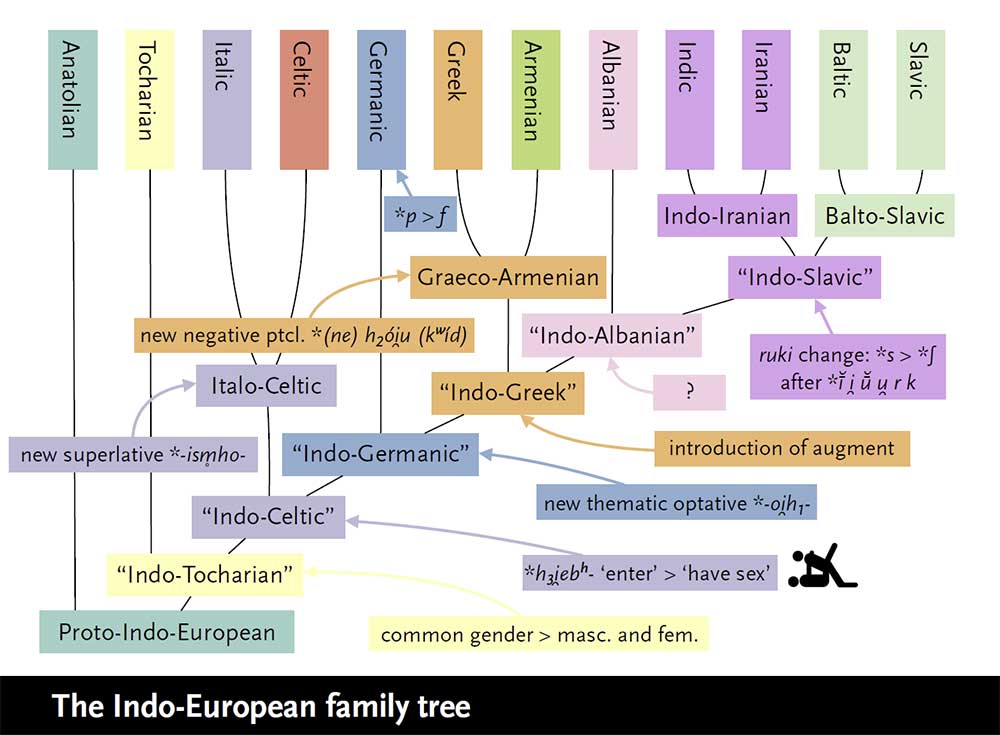
I love that the only image to make the cut here is two icon people having sex. Anyway, wherever the point of origin, the evolution of PIE into dozens of languages appears to be solid science using the technique of linguistic reconstruction. Below is an attempt to reconstruct the sounds of spoken PIE based on this research.
It’s fascinating to look over proto Indo-European vocabulary and see how many of the words bear a trace of resemblance to current languages. Here is a big list of nouns.
I believe there is an essential connection between this rapid spread of a common root language and the tumultuous viral lifestyle shift from Paleolithic to Neolithic. A bit about that can be found here: Sea Change. A related and fascinating piece of this story is that many fairy tales, even some still in use today, turn out to be over 6000 years old. This places them inside this the same zone time zone as the spread of PIE and the mass migration from tribes to settled, far larger communities. Here’s a reference to that discovery.
Through the long human story, we find our ancestors living out several different basic strategies, each more complex than the last. The transition between is often a transformation.
- Paleolithic
- Neolithic
- Village
- Town
- City
The Paleolithic (Old stone age) is the longest period of human experience. In this phase, we hunted and gathered. We were nomadic or semi-nomadic. We lived in small groups and made decisions in a relatively open, egalitarian way. The distance between headman and tribesman was minimal. This long phase of our time was spent getting a toehold and spreading all across the earth. The earth could never have been as densely populated by people as it is now if this strategy had continued. The “carrying capacity” of a small nomadic group is very finely balanced on a knife-edge of luck and skill and the relationship between the number of mouths to feed and the available food would have been constantly on everyone’s mind. Sick babies would likely be abandoned and sick elders in hard times would “walk out on the ice flows” to improve the odds for their families. The level of complexity in this life was low, the number of places where their lives overlapped and engaged with others was minimal. Strangers were serious business. The Neolithic picks up exactly where this leaves off. Continue reading
